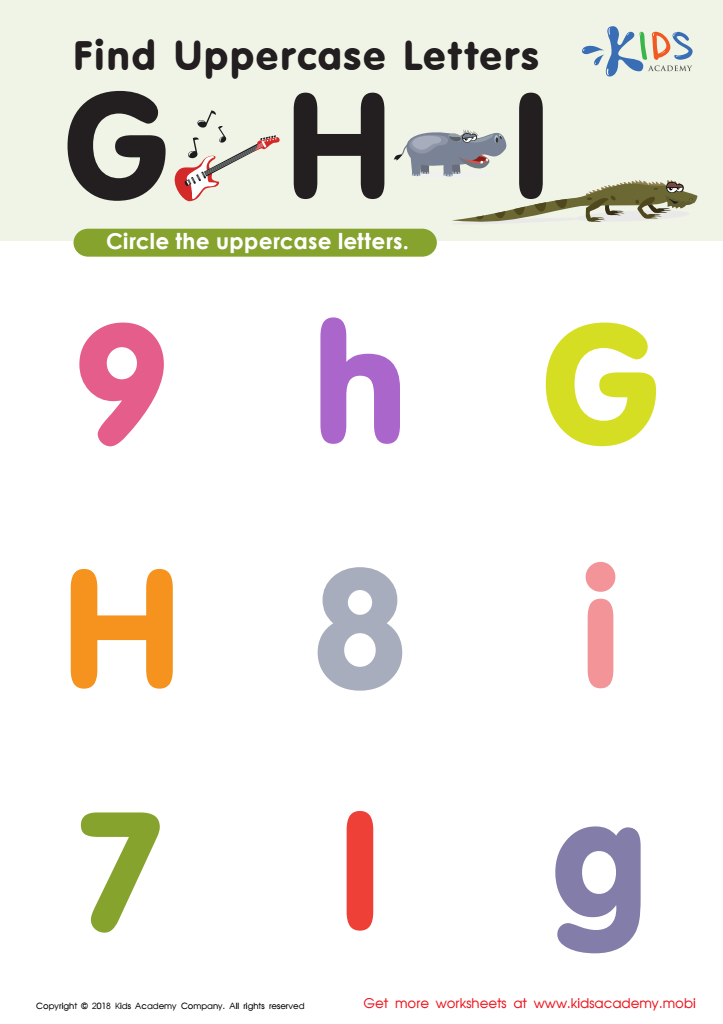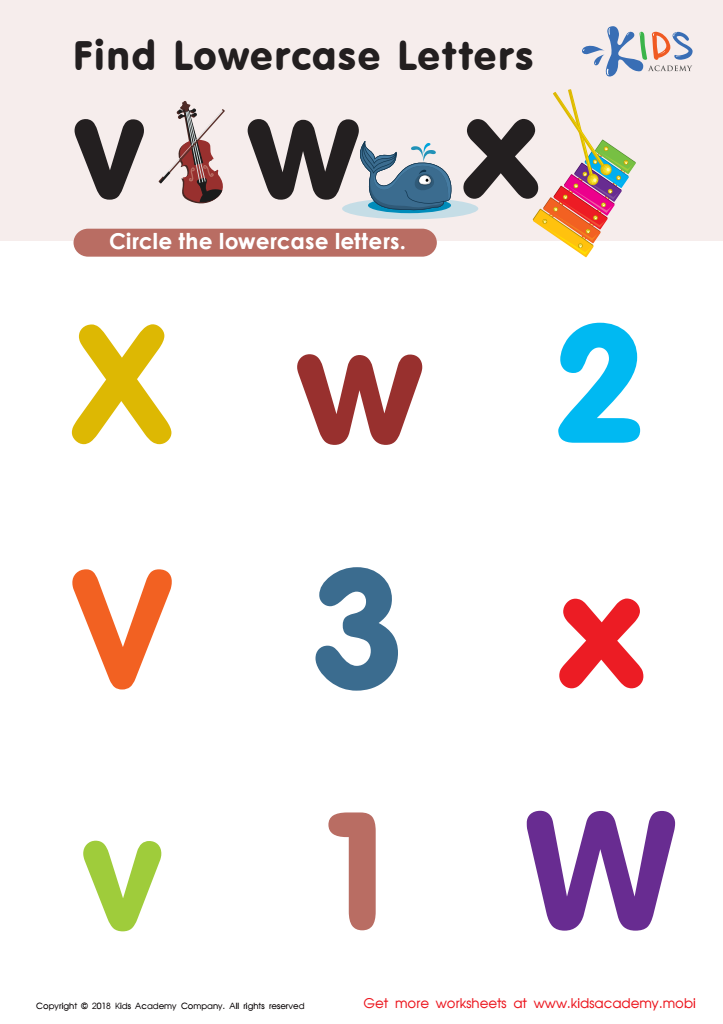Alphabet familiarity Normal Worksheets for Ages 6-9
6 filtered results
-
From - To
Enhance your child's language skills with our "Alphabet Familiarity Normal Worksheets" designed for ages 6-9. These engaging worksheets help young learners recognize, write, and understand the letters of the alphabet through enjoyable activities. Packed with creative exercises, including letter-matching, fill-in-the-blank, and coloring pages, these resources make learning fun and interactive. Each worksheet is tailored to suit different learning styles, ensuring every child gains confidence in their alphabet knowledge. Perfect for both home and classroom use, our worksheets are printable and easy to use. Start your child's journey to literacy today with these valuable educational tools!


Find Uppercase Letters G, H, and I Worksheet


Find Uppercase Letters Worksheet


Find Uppercase Letters J, K, and L Worksheet


Find lowercase Letters s t u Worksheet


Find Uppercase Letters A, B, and C Worksheet


Find Lowercase Letters v w x Worksheet
Alphabet familiarity is crucial for children aged 6 to 9 as it lays the foundation for their reading and writing skills. At this stage, children transition from learning to read to reading to learn, making alphabet recognition vital. Familiarity with letters aids in decoding words, which is essential for literacy development. When children understand the shapes and sounds of letters, they become more confident readers, directly influencing their academic success.
Moreover, alphabet familiarity contributes to language development. It enhances children's vocabulary and comprehension abilities, allowing them to engage with text more meaningfully. This skill is not just about recognizing letters; it also affects children’s ability to express themselves in writing, impacting their overall communication skills.
Teachers and parents should care about this familiarity as it elevates children's self-esteem and enthusiasm for learning. Providing support through fun activities, games, and phonics exercises reinforces their understanding and keeps them engaged. By prioritizing alphabet familiarity, adults play a vital role in preparing children for more complex literacy tasks, ensuring they have the tools necessary to thrive academically and socially in the years ahead.
 Assign to My Students
Assign to My Students
















